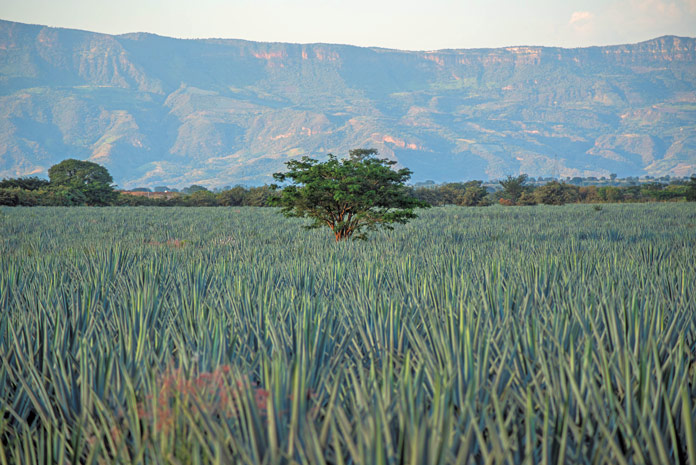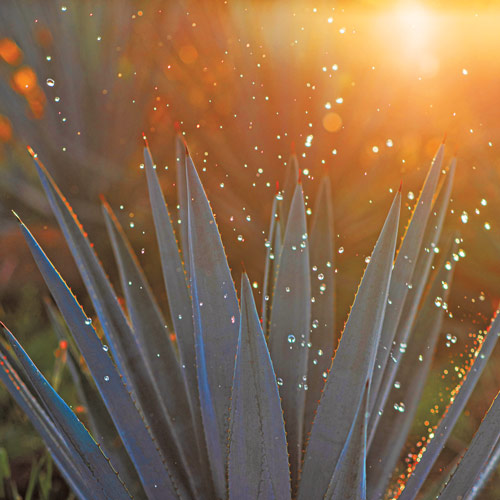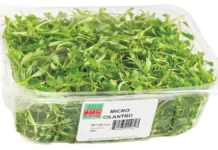
(Or, The Moral Of The Story Is Don’t Buy Cheap Tequila)
As if labor shortages and supply chain issues weren’t enough to cause headaches and hiccups in the hospitality industry as it comes back to life, Mother Nature is piling on too.
Access to a dwindling supply of raw materials is a reality that, though they may not yet realize it, many bars and restaurants are facing when creating inventory and drink menus. And consumers are feeling it too in prices they are paying, from cocktails to the agave spirits they seek out at retail.
In other industries, like in fashion, the economics of the push-pull between supply and demand reflects availability of finished product and a sense of exclusivity. Often it is a quantity story. But, for agave spirits, the issue begins way before any juice get into the bottle; it all starts in the ground for production as supply of raw ingredients is really the sole message here. Without it demand can go whistling in the wind.
Whether or not today’s consumers recall the old line from the Ernest & Julio Gallo wine commercials from the 1970s where it was said, “we’ll sell no wine before its time” they would be wise to take this theory to heart, swapping out “agave” for “wine” because the fact is, the agave — whether we are talking about the Blue Weber agave varietal that is headed for a bottle of tequila from a field in Jalisco or one of the approved municipalities in the states of Guanajuato, Michoacán, Nayarit, and Tamaulipas, or another agave species earmarked for mezcal production — has a finite growing period. Depending on varietal it takes from five to 35 years to reach maturity. And, according to many experts, increased demand for product is challenging the growth cycle of existing plants, leaving us with a deficit. And possible extinction.
It’s a deficit of raw product that has a huge negative cultural impact too. The problem is economics and ecology. David Suros, a leading tequila educator, is one who recognizes the threat of over production driven. In all his years of promoting his country’s 3,000-year-old liquid heritage he has seen the continual push for more and more product at unrealistically low prices to satisfy the marketplace does some real damage which creates a lack of sustainability. The impact of that is painful; for Mexican culture, for farmers who for generations have relied upon agave farming as a way of life, and for the bats that pollinate the plants and find fewer and fewer available.
Ben Wald, Head of Bar Programming at Yuco in NYC, shares his end-user perspective as he notes, “The agave spirits industry saw a huge boom in the last 10 years. The issue is that Blue Weber Agave takes 6-10 years to reach full maturity so when you’re talking about your product pipeline, you’re really looking 6-10 years out. It’s the same in the whiskey industry, they just wait post distillation during aging, while in agave, you’ve got to wait for your raw material, which has a much larger margin of time than in whiskey.
 What this has come to is the age-old problem of yield vs. what is good for the category. You have HUGE distilleries pumping out loads of sub-par tequila and selling it to bottlers who are trying to make a quick buck instead of trying to actually help not just the agave spirits industry, but Mexico in general. You’ve got these celebrity tequilas that are bottled by distilleries that take advantage of agave farmers paying them for unripe and subpar agave which leads to a terrible distillate which, in turn, leads to having to add tons of additives and losing the amazing flavor that well -made tequila has.”
What this has come to is the age-old problem of yield vs. what is good for the category. You have HUGE distilleries pumping out loads of sub-par tequila and selling it to bottlers who are trying to make a quick buck instead of trying to actually help not just the agave spirits industry, but Mexico in general. You’ve got these celebrity tequilas that are bottled by distilleries that take advantage of agave farmers paying them for unripe and subpar agave which leads to a terrible distillate which, in turn, leads to having to add tons of additives and losing the amazing flavor that well -made tequila has.”
Nick Reid and his fellow founding partners of Tromba Tequila, produced by renowned Master Distiller Marco Cedano in the Los Altos highlands of Jalisco, Mexico, are approaching this problem by launching their Endangered Agave Program. For every bottle sold the brand will seed wild agave plants on their designated sanctuary near the base of the Volcán de Colima to help save endangered populations of the prized species.
Reid, the creator of the program, notes that other brands, like Pedro Jimenez have taken note of the issue too and initiated similar programs and stresses the importance of these efforts as he says, “Thousands of plants are harvested and destroyed each year to create corporate farmland, threatening the diversity of the agave population. It is really sad that literally whole species of plants are becoming extinct because we’re drinking our spirits. We should drink nice spirits, but still be very conscious of the impact that has.”
Francisco Terrazas, National Agave Spirits Specialist at Samson & Surrey, implores the industry to consider both the natural consequences and the cultural impact spirit selection has. He says, “Agave is ubiquitous in Mexican culture and has been since before European contact. They had deities dedicated to the plant and its fermented sap. They used it for myriad things: textiles, paper, food, pulque (fermented sap), leaves for roofs, etc. Archeological evidence shows it has been roasted underground for around 10,000 years. Along with the milpa crops of corns, beans, squash and chiles, agave is a staple crop of indigenous culture. To lose these plants is to lose one of the base connections between people and the land. Once we lose that, we lose our history and culture.”
He concludes, “The spirits industry would lose one of its defining characteristics: diversity. The agave category arguably has the richest diversity not just of raw material, but of flavors derived from just the unaged spirit itself. All of these varieties of agave have their own physical characteristics and preferred environments. These differences all produce a countless number of flavor profiles that you simply cannot find in other spirit categories. Nor does the raw material used in most other categories have such an outsized role in local and indigenous culture.”
Wald concurs, sharing some recommendations for bartenders who share a passion for preserving nature’s bounty and agave culture, “Buy sustainable and responsibly made tequila. Use apps like Tequila Matchmaker to find out production methods and Google a brand to see if they are a good steward of tequila production.”
And, while Prince William’s inaugural Earthshot Prize which intends, over the next decade to inspire and celebrate new and collaborative action to meet environmental challenges may not have named agave preservation projects a winner, maybe next year it should.























